What Can We Do about the Water Shortage in South Dakota’s Future?
Banner Associates, Inc. | Apr 06, 2023

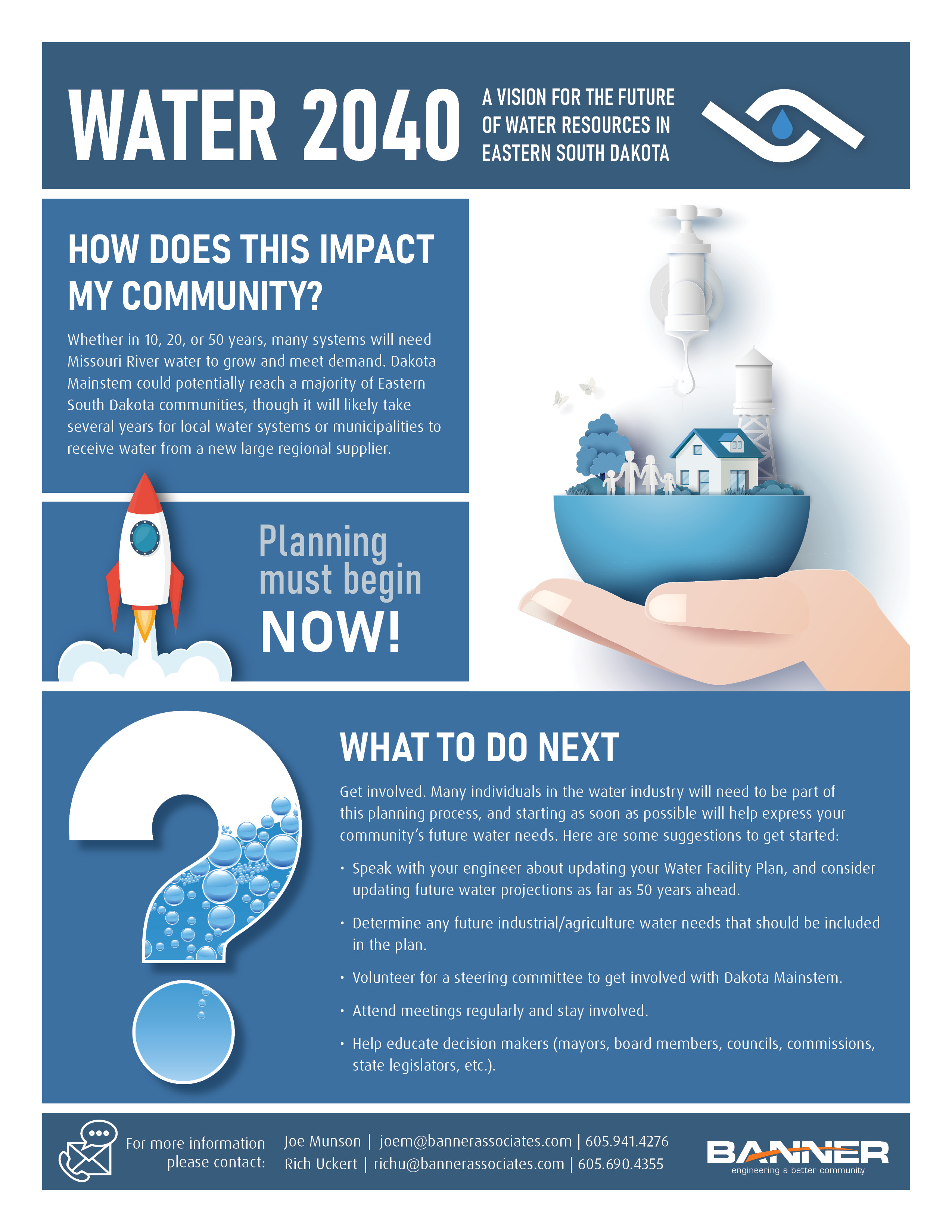
Tiny Homes, Big Options: New Housing with the Flandreau Santee Sioux Tribe
Neil Eichstadt | Nov 30, 2022

When exploring ways to expand housing options for their tribe, the Flandreau Santee Sioux Tribe came across Tiny Homes as a potential solution. With their small footprint and clever interior layouts, Tiny Homes bring many of the same amenities found in their larger counterparts in economic and efficient means. To ensure this new neighborhood offered the best living experience for residents, the Flandreau Santee Sioux Tribe turned to Banner for a number of engineering services; we were thrilled to take part in this project and help make this a great place to live!
The strategy the Tribe decided to implement was to work with us to develop the proposed Tiny Homes site while also working with a Tiny Homes supplier to ship fully-constructed homes directly to the housing development site in Flandreau.
Once on site, the Tiny Homes were set into place using a crane. Each Tiny Home is set atop a concrete foundation with a crawl space. Outside, the rest of the housing development will have the same sorts of features we expect in a neighborhood: roadways, utilities, sidewalk, and other infrastructure to support the Tiny Homes.
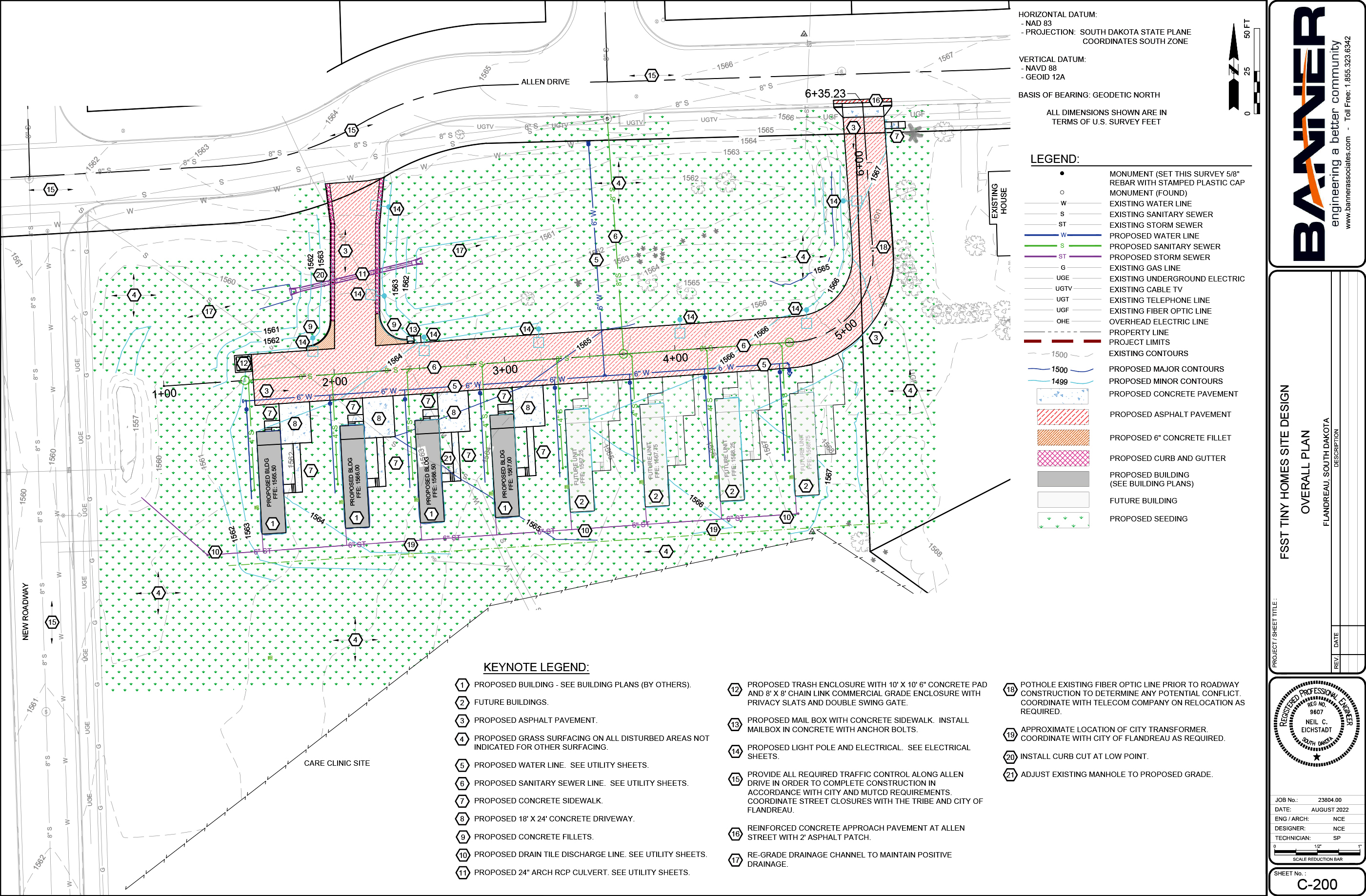
Throughout the project, there were some key aspects considered and implemented for this development:
- Review Tiny Home building plans and determine the site infrastructure needs for each unit.
- Analyze the existing site and determine the appropriate placement of the Tiny Homes within the limits of the project to maximize the use of the site. It was also important to avoid too many units being “shoe-horned” which would detract from the quality of life for the tenants.
- Divide the project into phases to ensure proposed site can accommodate future phases.
- Lay out roadways and utilities with the Tiny Homes to ensure proper access while maximizing use of the required materials.
- Factor a major drainageway along the north side of the site into the placement and elevation of the homes to avoid potential issues in large storm events.
- Ensure optimal traffic flow in and out of the development and for the finished neighborhood.
- Optimize existing site topography and drainage away from homes with site grading.
- Evaluate other site aspects like street lighting, mail delivery, and trash collection.
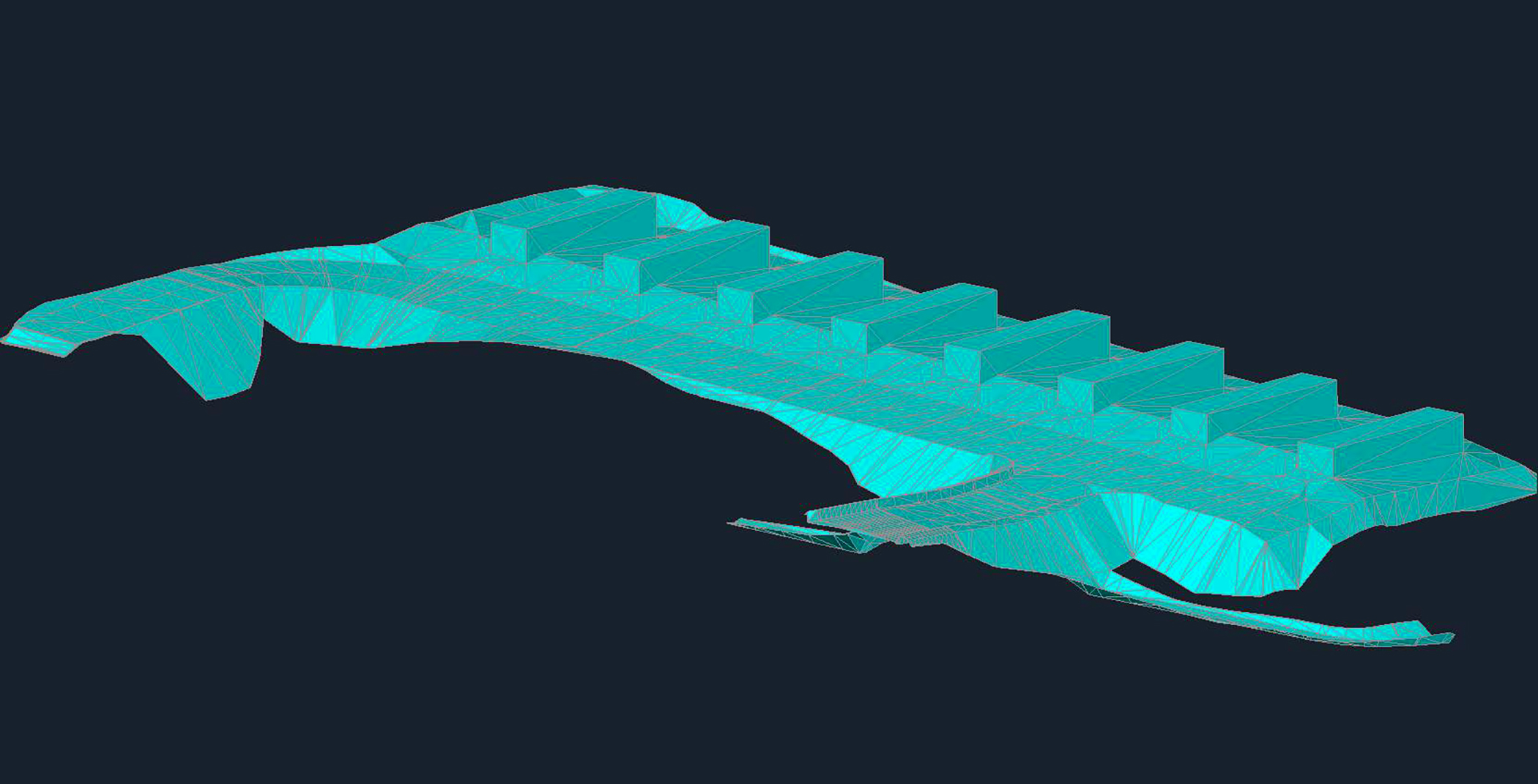

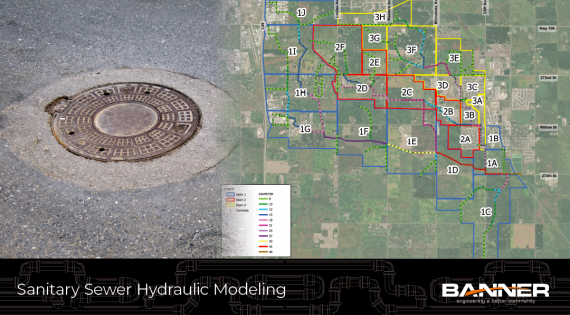
Hydraulic Modeling: More Than a Pipe Dream
Jessica Weinkauf | Aug 31, 2022
Welcoming more people, businesses, and/or industries to any given city often brings infrastructure challenges: what existing infrastructure can support the growth? What infrastructure will need to be replaced? Of course, these are just a few of the questions that come up when considering upgrades / expansions to infrastructure, and it can be difficult to know all the right questions to ask. Two growing South Dakota cities, Colton and Harrisburg, had unique challenges to address with their wastewater system infrastructure. To find the best route forward for each City’s individual needs and goals, Banner used Hydraulic Modeling.
Hydraulic Modeling is, in many ways, exactly what it sounds like. We use specialized software to create models of hydraulic systems to illustrate the complex effects of changing conditions on the sanitary sewer system. These hydraulic models display information on system components like pipes and pumps in multiple media forms like maps, tables, and graphs. Hydraulic modeling software allows us to study existing sewer systems, investigate proposed changes, and compare these findings against the projected system needs. For Colton, this meant looking at the impact of a growing residential footprint.
While planning a new residential development, the City of Colton wanted to determine if their system could handle the added wastewater, or if they needed to make a change. We gathered data and set to work on a hydraulic model to depict the impact of increased flows from the new development as the homes are filled over time. The model indicated the system needed some improvements and increased treatment capacity to support the full development. The City of Colton used this information to plan a phased approach with the developer to accommodate the sewer system improvements.
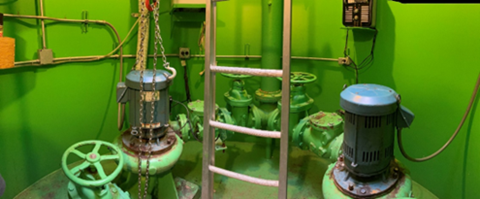
With even faster population growth on the horizon, the City of Harrisburg needed similar services. Known as the fastest growing city in South Dakota, Harrisburg faces challenges supporting that growth with their infrastructure. Adding a new area requires significant time investigating, evaluating, and planning options for expanding the sewer system. Adding multiple areas requires a strategy. Banner recently completed a long-range sewer system expansion study for the City of Harrisburg, detailing options to provide sewer service to 9,865 acres of future development land. Hydraulic modeling of the sewer system helped determine optimal and cost-effective pipe locations, sizes, and depths to provide sewer service for the area. From the model, we also:
- Established when existing sewer piping would reach capacity and require upsizing.
- Verified installation of large-diameter gravity sewer would allow the City to eliminate three sewer lift stations.
- Determined a sewer cross connection between basins was the most cost-effective alternative because it reduced downstream sewer pipe size requirements and demonstrated a portion of the existing trunk sewer could convey projected flows.
- Evaluated the ability to use dual, parallel sewers to phase installation and spread out the project cost.
Colton and Harrisburg are two cities among dozens we have helped with Hydraulic Modeling. From determining if / when upsizing and upgrades are necessary to the impacts of new development and industry on sewer systems, Banner uses sewer modeling to help our communities determine the best course of action for each individual situation. Ready to bring a positive change to your community? Contact us to get started—we look forward to Engineering A Better Community with you!
Do Core Values Really Matter?
Brad Wermers | Aug 23, 2022
 Like so many other companies working to find their place in the world, we approached the idea of core values as a way to pave the path to success. Also like other companies, we learned that finding our core values was not an easy or obvious journey. A few years ago, we started a process at Banner to reevaluate the company and establish new core values to match and strengthen our culture. We reflected and asked ourselves some tough questions about who we are and what we value as people. We discovered common threads in what we care about, what we would never compromise, and what we aspire to be. These ideas became the foundational pieces of a reformed Banner: we will be Reliable, Passionate, People-Focused, and Driven as we embrace a Culture of Improvement. These ideas became our core values.
Like so many other companies working to find their place in the world, we approached the idea of core values as a way to pave the path to success. Also like other companies, we learned that finding our core values was not an easy or obvious journey. A few years ago, we started a process at Banner to reevaluate the company and establish new core values to match and strengthen our culture. We reflected and asked ourselves some tough questions about who we are and what we value as people. We discovered common threads in what we care about, what we would never compromise, and what we aspire to be. These ideas became the foundational pieces of a reformed Banner: we will be Reliable, Passionate, People-Focused, and Driven as we embrace a Culture of Improvement. These ideas became our core values.
Through company traditions, events, and daily interactions between staff and our clients, these core values began to surface in every facet of our business. Recognition, communication, and ongoing development brought a change in each of us as our passion for and commitment to our work grew. The business grew too. This was different than before. This was better.
What made the difference? We let the core values emerge on their own as genuine extensions of our collective motivations and goals. We stopped trying to manufacture motivation and instead started amplifying the excitement for our work we all shared. And when everyone here naturally upholds these core values, this outstanding company can take on just about anything.
Over the coming weeks, I will be posting segments on each of our core values through our social media channels. As important as it is for us on the Banner team to live by these values, we feel these values help the communities and entities we serve to better understand us and our ongoing mission of Engineering A Better Community. They have helped us continue solid relationships that have lasted decades, and build new ones that we are excited to see unfold.
So, to answer the question “Do Core Values really matter?”: Yes!
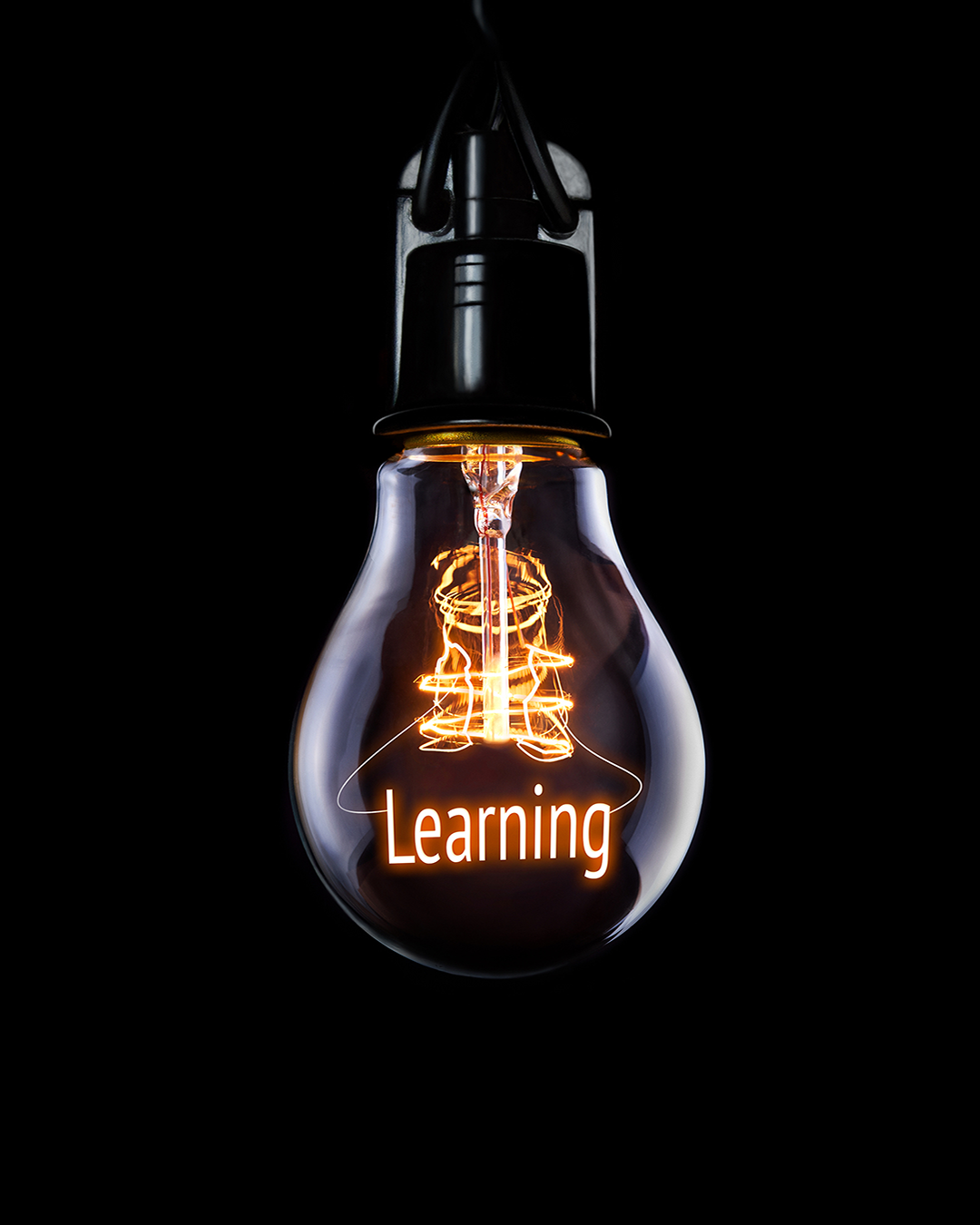
Core Value 1: embrace the Culture of Improvement
We think of success as a status that can be earned and maintained; something we have to work on daily. Whether it’s reading a self-improvement book recommended by a colleague or jumping into a new education path, we challenge ourselves to continuously grow and improve. For us, truly embracing this culture of improvement means providing opportunity to improve. Our team can receive tuition assistance for continuing education opportunities with nearby universities, technical schools, and online education. Different types of specialized training, certification, and short courses are covered too: Floodplain Management training, NACE certification, and AutoCAD University courses are just a few examples people on our team have pursued. While we are all excited to keep learning and evolving on a personal level, we are thrilled to better our services for the clients we serve today and in the future.
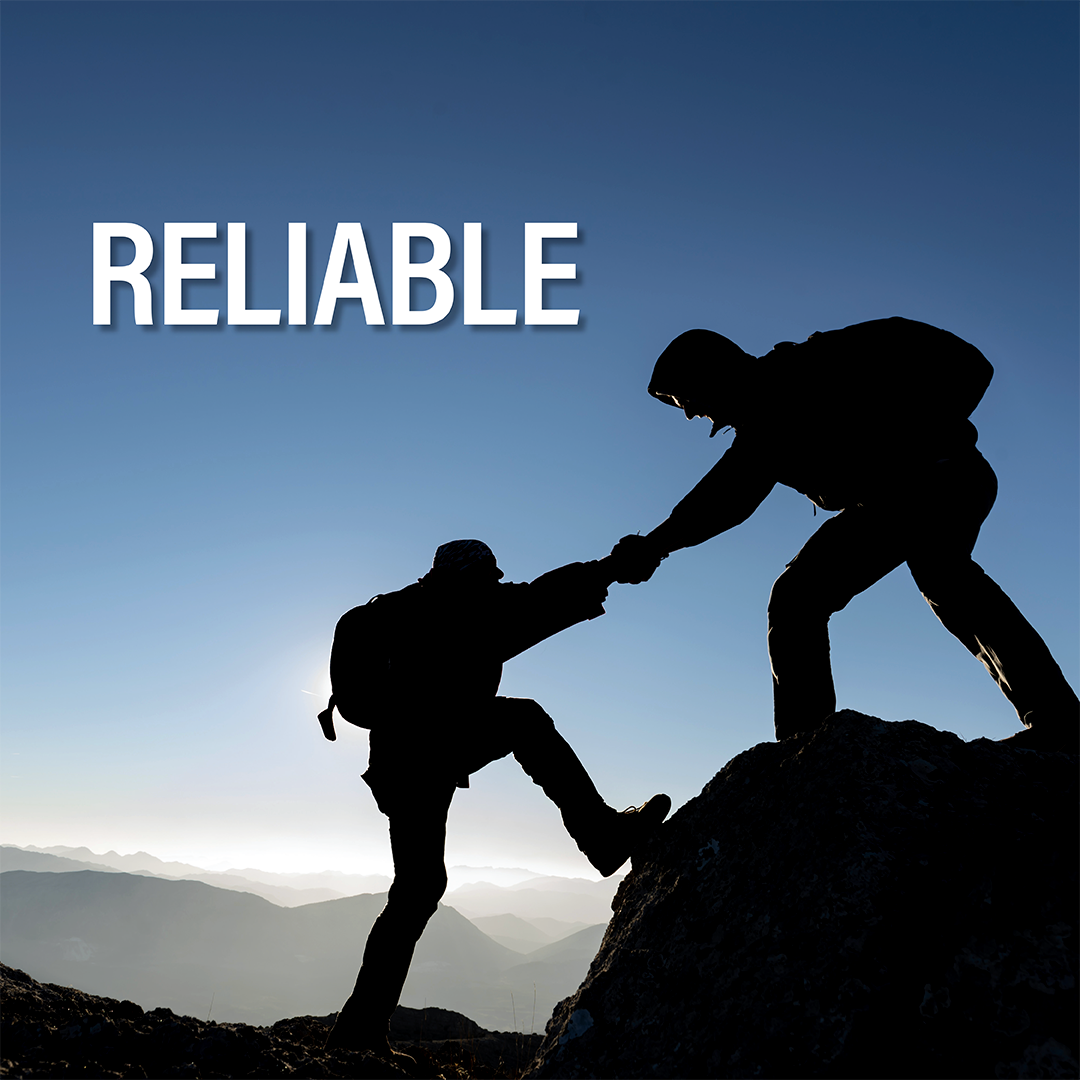
Core Value 2: be Reliable in all our actions and words
We want to provide the best services possible for our clients each and every time we work together, and we think we’re doing a pretty good job. Our clients come back to us time and again, and they recommend others to us as well. At Banner, being reliable is a simple idea: we do our best to deliver what we offer. In practice, being reliable starts with refining what we offer—and what we don’t.
We listen to each client and community carefully to learn their needs and goals, then compare those to our capabilities and limitations. The comparison is a crucial litmus test, as our capabilities tell us if we could take on a project, and our limitations tell us if we should take on a project. If all of these align, we know we can confidently offer services and solutions. If not, it’s the first sign we need to pivot. From there, it’s planning, diligence, and continuous improvement.
Core Value 3: Be Passionate with an Encouraging Attitude
There’s something to say about the thrill we get walking through a new residential development. Drinking one of the first glasses of clean water out of a system that will serve a dozen communities. Driving across a new bridge. Visiting expanded parks and seeing the updated amenities. Really, we feel that buzz of excitement every time we get to see how our work helps people improve their communities. The reason is probably obvious by now: we love what we do.
The only rush that compares is seeing how we build each other up. This passion for what we do extends far beyond the doors of our offices, giving back to the people and communities that helped us get where we are. Many of us are active members in organizations, both as learners and leaders. We maintain strong relationships with universities, students, and faculty throughout the state to help with learning opportunities. Volunteering in our communities is baked into our culture. We even offer paid time away from work specifically for volunteering! We push each other to be better every day.
For us, it’s never just about doing what we do because we’re good at it. Basically, what we do is so ingrained in who we are, we can’t not do what we do. It’s part of us. It’s in our DNA. We build each other while we build communities.
Core Value 4: Possess the Drive to Succeed

It could be grabbing an afternoon coffee so you have the energy for class after a full day of work. Maybe it’s travelling for miles to present at a conference even though you just got back from a client visit across the state. Perhaps it’s choosing to study over the weekend for your upcoming specialty certification exam instead of going hiking. Whatever the case, it’s not about sacrificing energy, time, or happiness to find success. It’s about getting people in roles and projects they care about in the first place: something they believe in enough to use their energy, spend their time, and maybe even gain a little happiness at the end of the day.

Core Value 5: People Focused, Always
It’s mid-afternoon on a Friday, and you’re wrapping up some designs that a client expects on Monday morning. You run down the Client’s original needs and verify your design. Even though everything looks good so far, you can’t shake the feeling that something isn’t quite right. That’s when you noticed a designed feature that may negatively impact a proposed future expansion. All data was evaluated from the Facility Plan prepared a couple of years ago, but the discussions of a future expansion have only recently developed. You have two choices: call it good and move on or sacrifice part of your weekend to reevaluate the design.
Sometimes, it’s good to take a step back and reflect on what influences our decisions and keep ourselves in check. We need to ask why we are doing, well, whatever it is that we’re doing. More importantly, the answer needs to be “it makes someone’s life better.” Everything we do—for clients and coworkers alike—affects people. We keep our focus on people, always.
In my earlier example, I can say any and all of us are ready to sacrifice a weekend to make things right for our client—that’s not automatically a good thing though. It’s good that we make things right, of course, but it still cost someone their weekend. Focusing on people means checking and improving our processes to prevent situations like my earlier example (or at least to catch them sooner). It means caring for ourselves like we do for our clients: without compromise.
Get the Word Out: How Banner Helps You Communicate Your Project
Banner Associates, Inc. | Dec 09, 2021

Everyone knows good communication is foundational for a successful project. In most cases, it manifests as the team meeting regularly, discussing openly, and making sound decisions per the project plan. Project plans, however, sometimes overlook communication with audiences that may be critical to the project’s success. When it comes to communicating with local decision makers, stakeholders, the public, and more, your project needs a communication plan. Banner’s Strategic Communications team is here to help!
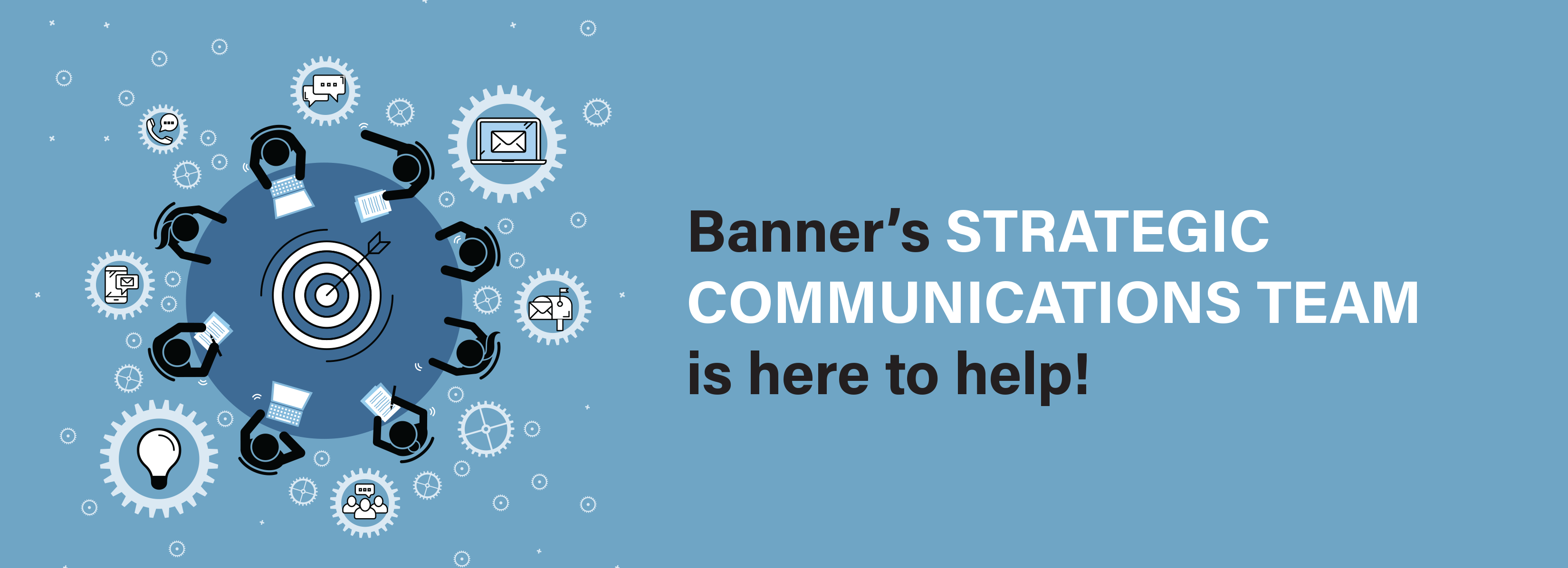
Each community—and the audiences in them—has different needs. Local decision makers may want a full presentation, or they may want a one-page flier. Stakeholders might need an in-person meeting to discuss details and ask questions, or they might want a packet. Members of the public could want town hall meetings, mailers, or social media updates. Your project’s communication plan may need one of these, but it might need all of these. We work with you and your community to determine which communication paths best meet the needs of each audience, and then we help put together effective content.

Of course, we brought examples. We put together this data sheet for a bank stabilization project in Yankton, SD to help the project team address common questions from the public. When the South Dakota Department of Transportation needed the Winter Highway Maintenance Plan updated, we edited the verbiage and pumped up the graphics, upholding SDDOT brand standards throughout. The sign posted outside the new housing development? We do that, too. Our social media accounts have regular updates and milestones for projects big and small for communities to share with their followers. We also help communities with digital assets (e.g. logos) that they can use for their own social media, website, print publications, and more.
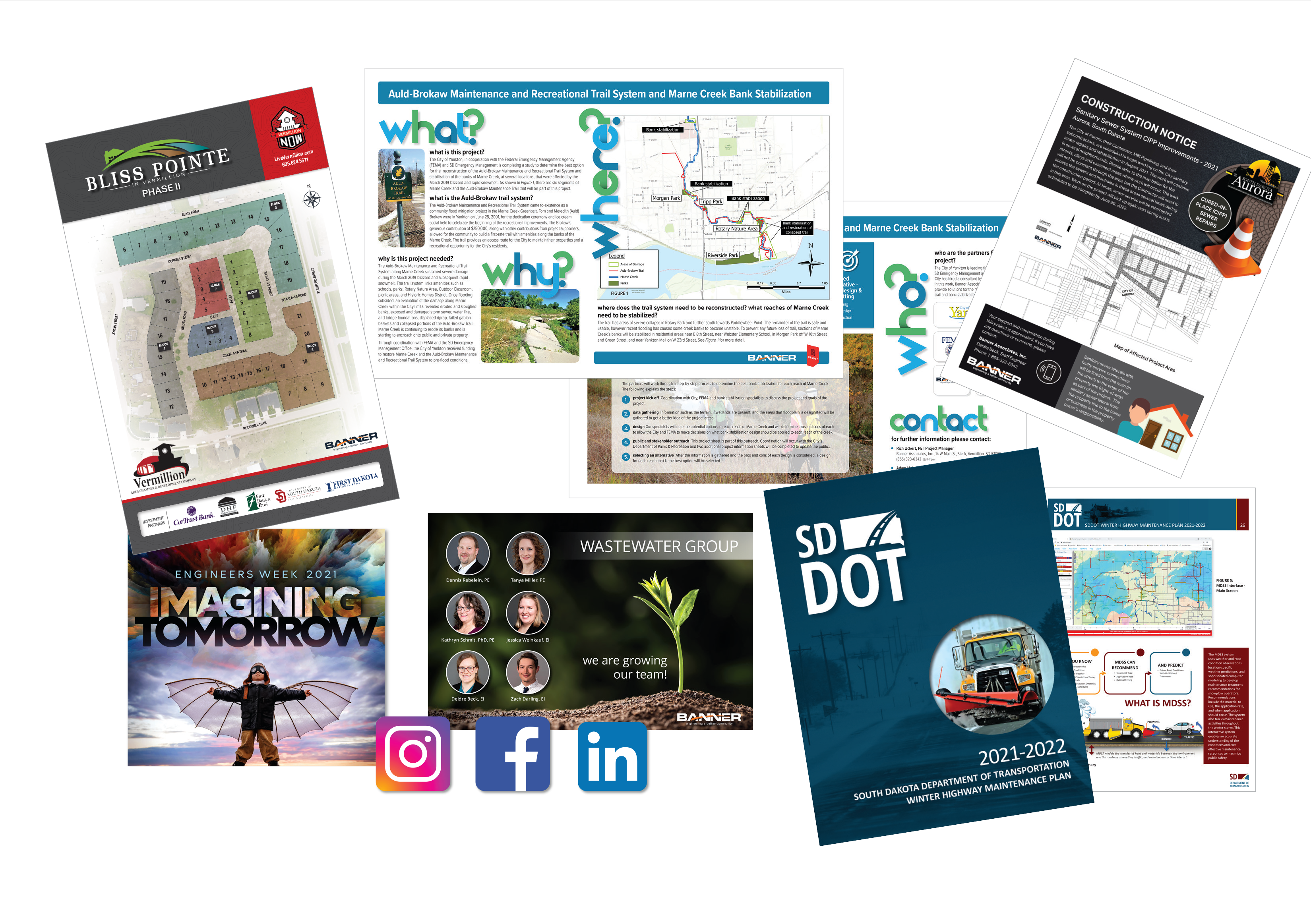
With Banner, you get more than an engineering firm. Our dedicated Strategic Communications specialists can help throughout your project with polished, informative content for every audience. Get in touch with us today to get started!
Thanks for reading!

In the Pipeline: Rehabilitating Sanitary Sewer Systems with Trenchless Methods
Deidre Beck | Oct 07, 2021
Trenchless processes and technology allow work on underground utilities—maintenance and new installations alike—with little or no digging required. One example of trenchless technology is Cured-In-Place-Pipe (CIPP), a process that repairs and rehabilitates aging / damaged pipe systems by creating new pipe within the existing pipe. A resin-infused liner is routed through existing pipes; the lining is then expanded to form-fit the existing pipes and heat or UV light is used to activate the resin. Once fully cured, the finished product is a new, seamless pipe that can last for decades. Using this process to repair sewers without having to remove and replace pavement reduces costs and this can make all the difference for communities
As an industry practice, trenchless construction methods are growing in popularity and acceptance due in part to the efforts of the National Association of Sewer Service Companies (NASSCO). NASSCO, an organization of professionals in the underground utility field, advocates and promotes trenchless methods and technologies with multiple resources for members. We refer to standards and specifications produced by NASSCO; we also learn from their ongoing education programs and certification courses. Several members of our team have received additional training and are NASSCO Certified:
Deidre Beck
- Manhole Rehabilitation Inspection Certified (MH ITCP)
- Cured In Place Pipe Installation Inspection Certified (CIPP ITCP)
- Pipeline Assessment Certification Program (PACP), Lateral Assessment Certification Program (LACP) and Manhole Assessment Certification Program (MACP) Certified.
Jessica Weinkauf
- Manhole Rehabilitation Inspection Certified (MH ITCP)
- Cured In Place Pipe Installation Inspection Certified (CIPP ITCP)
- Pipeline Assessment Certification Program (PACP), Lateral Assessment Certification Program (LACP) and Manhole Assessment Certification Program (MACP) Certified.
Jordan Nelson
- Manhole Rehabilitation Inspection Certified (MH ITCP)
- Cured In Place Pipe Installation Inspection Certified (CIPP ITCP)
- Pipeline Assessment Certification Program (PACP), Lateral Assessment Certification Program (LACP) and Manhole Assessment Certification Program (MACP) Certified.
Beth Niemeyer
- Cured In Place Pipe Installation Inspection Certified (CIPP ITCP)
- Pipeline Assessment Certification Program (PACP), Lateral Assessment Certification Program (LACP) and Manhole Assessment Certification Program (MACP) Certified.
Our Wastewater Department brings a commitment to continuous improvement, always striving to bring the best to the communities we serve. In many cases, trenchless technologies offer effective solutions for rehabilitating wastewater systems in a more cost-effective manner than traditional solutions without compromising the quality and longevity of the solution. Our work with NASSCO keeps us apprised of the latest and greatest developments so we can continue Engineering a Better Community.
Homing In: Vermillion’s Bliss Pointe Phase II Groundbreaking
Banner Associates, Inc. | Jun 02, 2021
On Wednesday May 12th, people gathered for a groundbreaking ceremony that will bring over 50 new homes to the City of Vermillion’s newest residential development. This event, hosted by the Vermillion Area Chamber and Development Company (VCDC), kicks off Phase II of the multimillion-dollar Bliss Pointe housing development.

Nate Welch (VCDC President and CEO) had a few words on the project’s impact: “Quality housing is imperative to any community… This next phase of Bliss Pointe will help Vermillion continue to strive in the improvement of attainable housing options so more people can call Vermillion home.”

Considering Banner’s core values of being people-focused and embracing a culture of improvement, this project resonated with us. The VCDC’s continued efforts to bring new, attainable housing options to current and potential residents echo these values, and we are proud to have a part in the Bliss Pointe Phase II development. So far, we have assisted with topographic surveying, planning, designing, and bidding; we are continuing our work on the project with construction staking and our resident project representative services.

Bliss Pointe Phase II is anticipated to be complete this coming November, and lot pricing information is scheduled for release in early July. We want to thank the VCDC for all they do for Vermillion, and again for letting us help engineer a better community.

Level Up: How Surveying Helps Communities Grow
Banner Associates, Inc. | May 06, 2021
Everything ages. As equipment and facilities reach the limits of their useful life, some companies will opt to do more than replace and update: they use it as an opportunity to expand. With the right information on the inner workings of the building, an expansion seems simple enough. Like everything aging, however, the earth is always shifting, and even subtle changes can have huge impacts on any expansion project. To make sure we have a complete picture of the conditions, we use various land surveying techniques to gather data on the land and any changes that have occurred. This data factors into design and construction, ensuring the new (or reconstructed) sections match the existing facility. One of these techniques is line leveling.
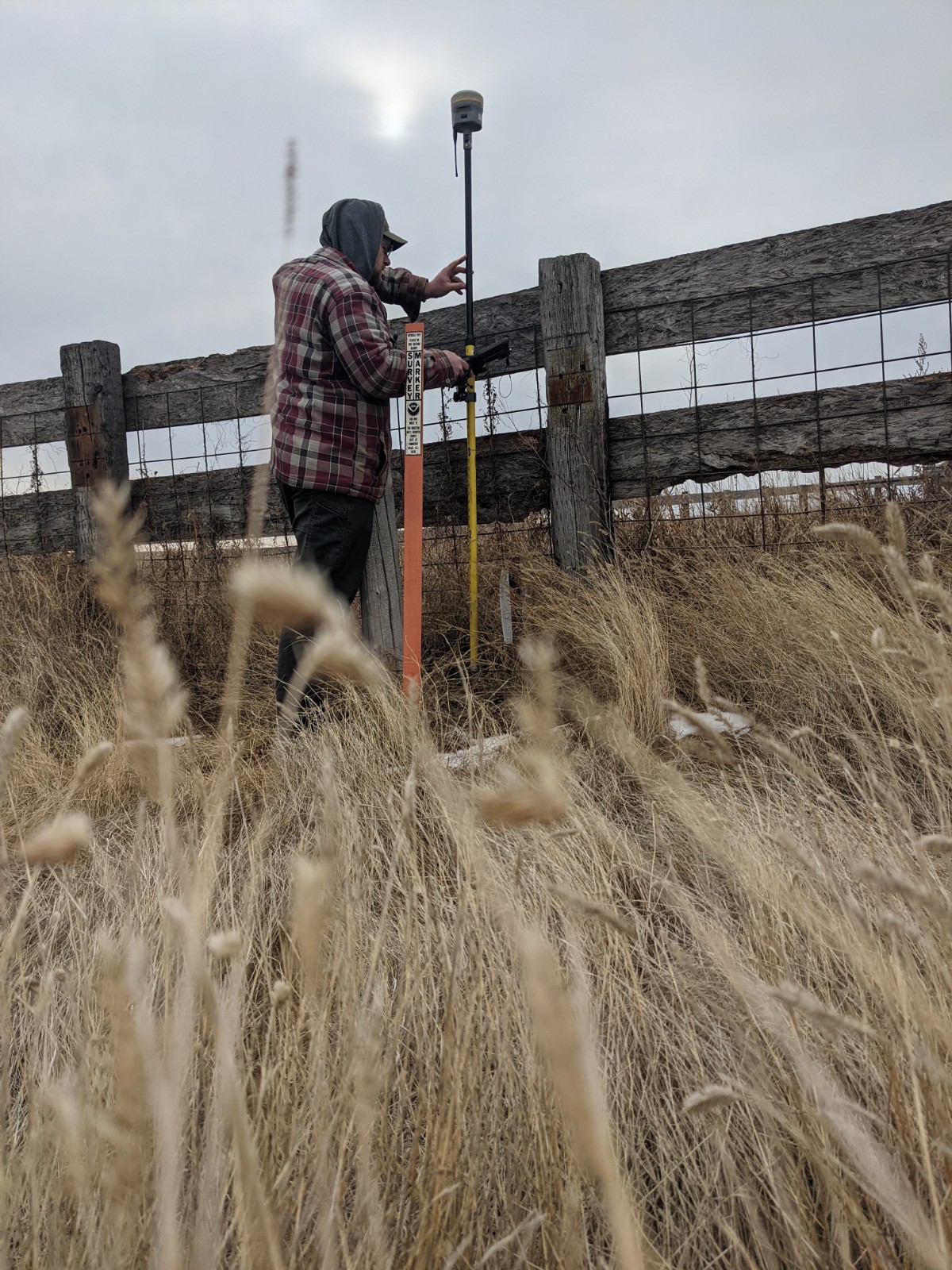
Line Leveling is a simple but essential part of surveying and engineering. It starts with finding fixed metal anchors in the earth known as National Geodetic Survey (NGS) monuments. Monuments are cataloged in the NGS database as a single point for all past, present, and future survey data. When surveying, we use a level and grading rod to create a level loop, which is a series of elevations collected by leap-frogging from point to point until we return to the original spot, collecting data along the way. From there, we “check in” to determine if the level loop data is within tolerance and run additional calculations to adjust for any errors that occurred throughout the process. The result is accurate elevation data for the surveyed area, which is critical for design and construction.
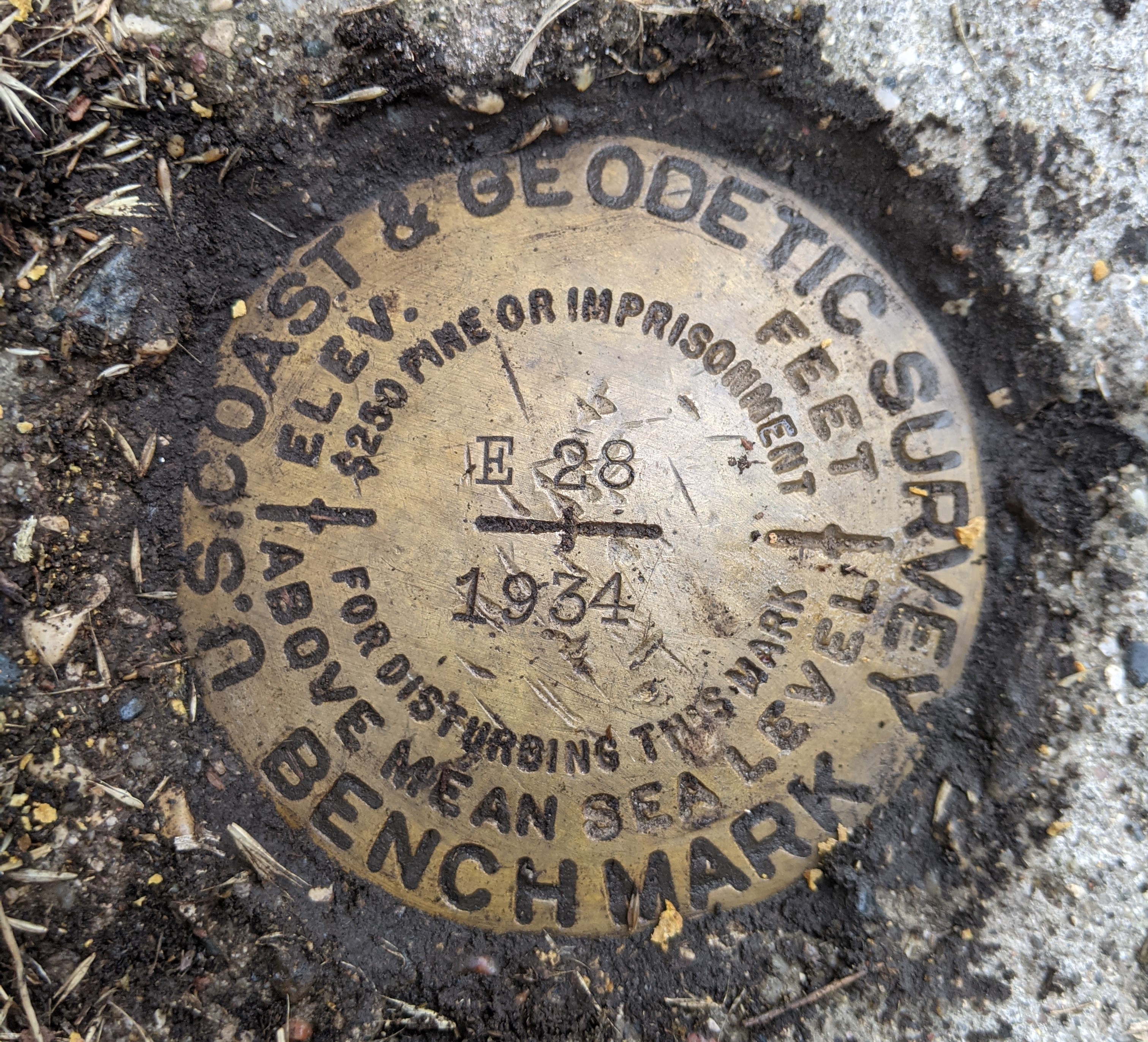
As an example, we are working with WEB Water on a project to expand a facility. This particular facility presents unique challenges, as it has plan sets spanning across multiple decades which use varying data points. In Surveying, these data points are known individually as Vertical Datum: they serve as a point of zero elevation that we use to determine the elevation of other points in the surveyed area. Since the earth is always moving and undulating, a vertical datum can change over time. Beyond that, each plan set through the years used a different vertical datum.
We set to work, obtaining accurate elevations of important features like tanks and finished floors using a new vertical datum. From there, the design team will be able to compare elevation data from the previous plans with current elevation data, designing an expansion that can seamlessly incorporate with the existing buildings.
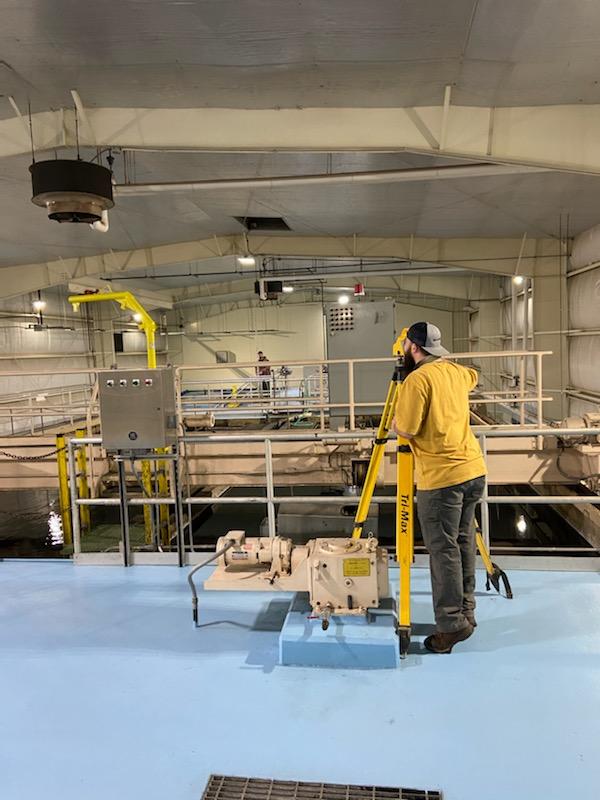
Celebrating Environmental Protection: Happy 51st Anniversary to Earth Day!
Banner Associates, Inc. | Apr 22, 2021

After 51 years, April 22nd has become an important date on the calendars for over a billion people across nearly 200 countries: it’s Earth Day! Starting as a means to raise support for and awareness of environmental protection, Earth Day has grown into a movement that extends far beyond one calendar day. In fact, some areas have expanded Earth Day into a seven-day schedule of events, aptly titled Earth Week. This year’s theme is “Restore Our Earth,” which focuses on climate change and what we can do—individually and collectively—to make a difference. Environmental protection and restoration can start with simple steps in our everyday life, and it can start today. Here are a few ideas to get started:
- Swap out your single-use plastics.
- Add native plants to your garden. If you don’t have garden space, try indoor planters to grow your own herbs and leafy greens.
- Start a kitchen compost bin.
- Learn about your area’s recycling programs and which materials you can recycle.
- Support environmentally conscious companies:
- Check products and packaging labels for “made from recycled materials” and “made from sustainable resources” (e.g. paper, cardboard, clothing, and more)
- Look for biodegradable and/or compostable packaging (often food containers)
Of course, there are many other options and ideas to help our environment and restore our Earth: learn more by attending Earth Day events in your area. In South Dakota, Dakota Rural Action is hosting an Annual Earth Day Expo in Rapid City from April 19th–25th. The Expo includes virtual and socially-distanced outdoor activities and events in honor of Earth Day. The official Earth Day website has listings for larger area events, and local events are usually easy to find in local news websites and social media.
Sustainability and awareness begin with each of us, and together we have the power to make a change. Happy Earth Day!
No Bridge Too Far: Judging the AISC Student Steel Bridge Virtual Competition at SDSU
Banner Associates, Inc. | Apr 15, 2021
When COVID restrictions pushed a normally in-person student competition to the virtual stage, members of the Banner engineering team stepped up to help. For the last few decades, the American Institute of Steel Construction (AISC) has hosted an annual Student Steel Bridge Competition (SSBC). The goals of the SSBC are fairly straightforward: they encourage students, working in groups, to apply the concepts they’ve learned in class to design, construct, and test a bridge made of steel. The student teams would usually bring their finished bridges to regional events for judges to review, but limitations on social gatherings posed an issue. Rather than consider the competition a bridge too far during pandemic restrictions, AISC adapted by asking schools to compete virtually from their own campuses by enlisting local engineering professionals as judges.
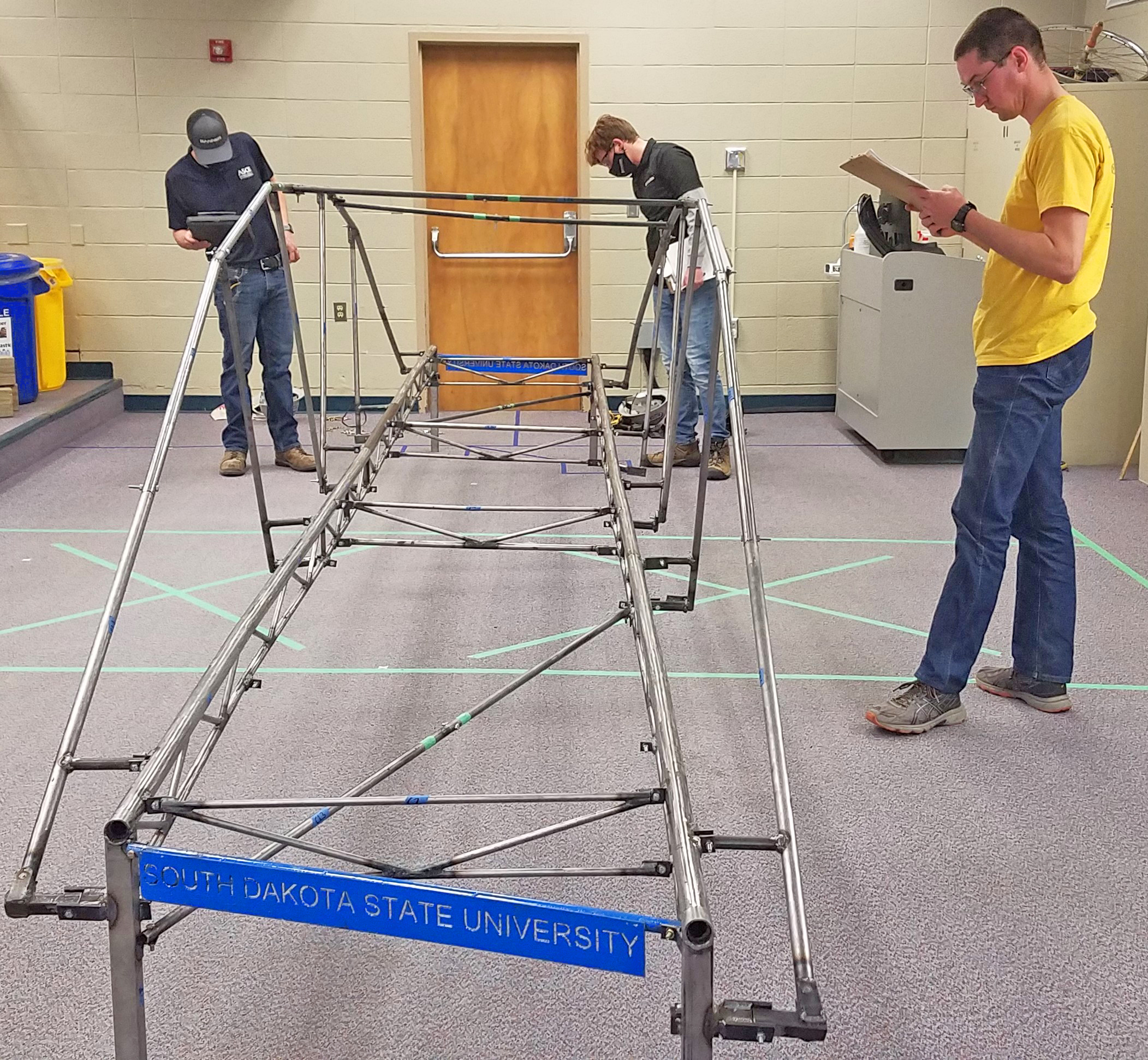
Tevis Holzer, an engineer in our Structural group, was asked to be the Head Judge for the South Dakota State University (SDSU) entry. Tevis was joined by fellow Banner engineering team members Deidre Beck and Matthew Buenger, as well as Brian Ruppelt from CDI. Together, this team of judges was responsible for verifying the students adhered to the safety requirements and competition rules in the 56-page AISC competition rulebook and, of course, scoring the students’ work. This meant checking the student team’s safety measures, designs, construction time, processes, methods, materials, and even the simulated bridge installation area, complete with marked-off sections that represented staging yards, construction zones, and a river.

Once the judges validated each of these requirements, they turned their attention to official evaluation of the student team’s work. The bridge was loaded with 2,500 pounds of weight while Tevis, Deidre, Matthew, and Brian watched for deflection, or changes in the structure to accommodate the load. The primary criteria included the weight of the bridge itself, overall assembly time, integrity under lateral and vertical loads, and aesthetics.
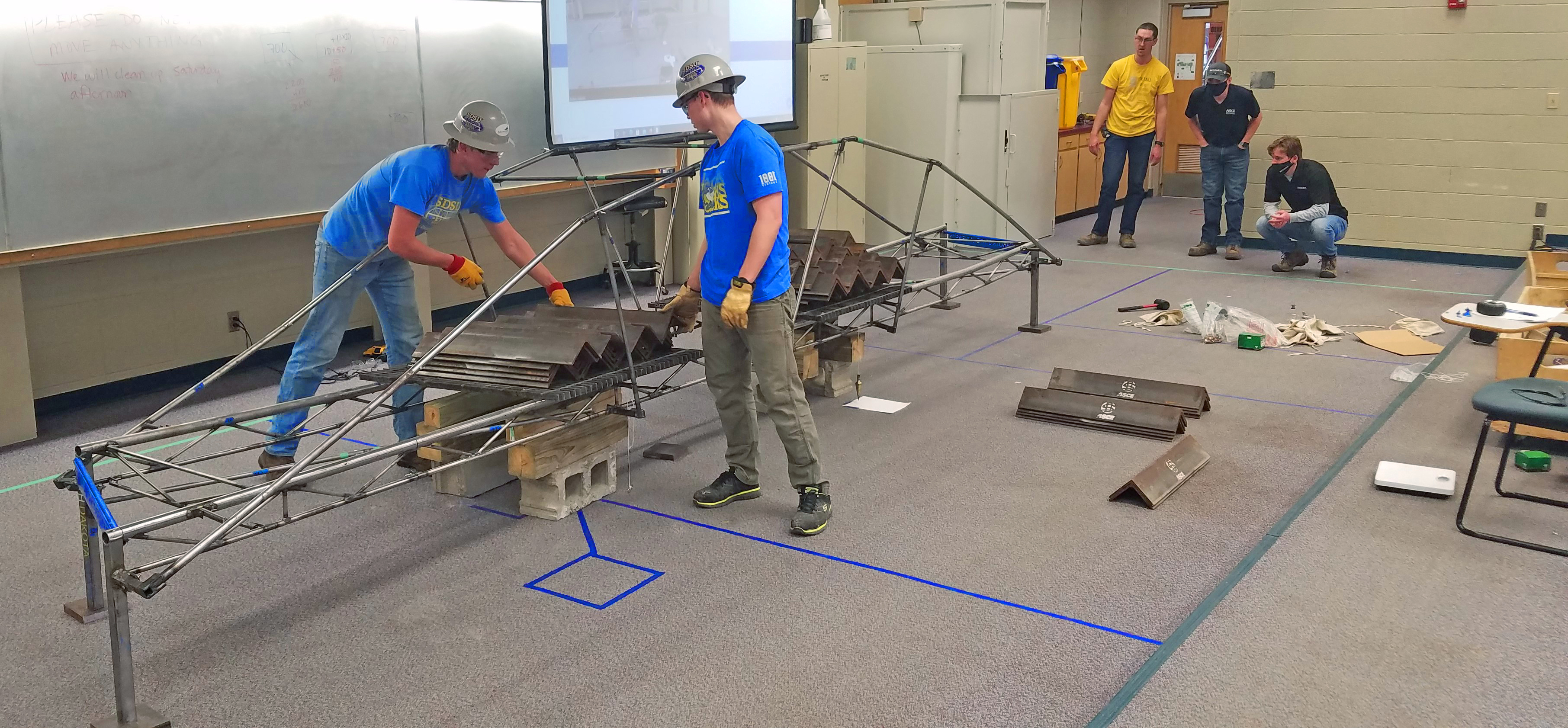
Ultimately, the work from the judges and students alike complied with the AISC requirements for a successful entry to the 2021 SSBC virtual competition. We are excited this long-standing competition could overcome the distancing challenges to keep students engaged and connected, and proud to have members of the Banner team volunteer their time to help out. We wish the best of luck to all the competitors!

